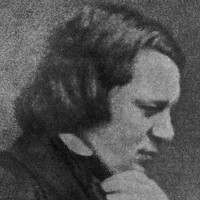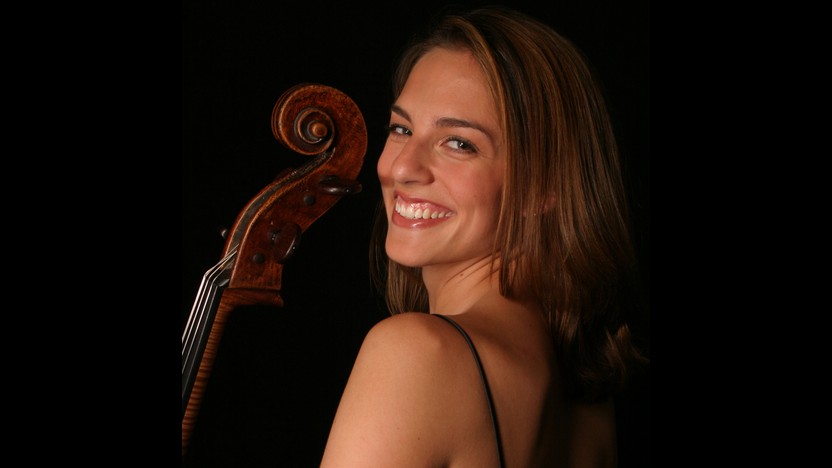Details
 Listen to Audio
Listen to Audio
Robert Schumann
Cello Concerto
Robert Schumann moved to Düsseldorf in 1850 to begin his new post as Municipal Music Director. Despite the added strain of conducting and managing an orchestra, he entered one of his most productive periods of composition, completing fifty works over the next four years. Sadly, this phase also marked the final collapse of Schumann’s mental health. Not long after the move, Clara Schumann noted her husband’s “highly nervous, irritable, excited mood.” The orchestra forced Robert to resign his conducting post in 1853, and the next year he threw himself into the Rhine River in a suicide attempt. He lived out his remaining years in an insane asylum.
One of the first pieces Schumann completed in Düsseldorf was originally labeled a Konzertstück for cello and orchestra and later published as a Cello Concerto. The composition does contain the three typical movements of a concerto, but the heading of Konzertstück (“Concert Piece”) captures Schumann’s desire to create a more integrated and continuous form, rather than a showy concerto full of virtuosity for its own sake. To that end, he dispensed with a hefty orchestral introduction, connected the three movements with linking material, and included orchestral accompaniment during a solo cadenza, among other departures from traditional concerto form. Schumann had played the cello as a boy, and again briefly after a hand injury curtailed his piano playing, and he put his intimate understanding of the instrument to use in the concerto. The solo part exploits the full sonic range of the instrument, from the growling bass of the open C-string to the steely soprano territory beyond the treble staff, while the deft orchestration ensures that the soloist is never obscured.
Schumann penned the Cello Concerto in just two weeks, completing it on the day he conducted his first concert in Düsseldorf. He must have held some misgivings about the work, since he canceled a scheduled premiere in 1852 and delayed its publication until 1854. The first performance did not occur until 1860, four years after Schumann died.
The interconnected movements feature thematic cross-references throughout. The opening gesture of three successive chords, for example, takes on new forms in the second and third movements; likewise, the interval of a descending fifth that pervades the slow movement reappears in the accompaniment to the finale’s cadenza. Still, for all its formal novelty, it is the heartbreaking lyricism that distinguishes this concerto. Clara Schumann was among the first to appreciate the strengths of the work when, in 1851, she wrote, “The romantic quality, the vivacity, the freshness and humor, also the highly interesting interweaving of violoncello and orchestra are indeed wholly ravishing, and what euphony and deep feeling one finds in all the melodic passages!”
Aaron Grad ©2013
 Listen to Audio
Listen to Audio
Ludwig van Beethoven
Symphony No. 8
Upon finishing the Seventh Symphony in the spring of 1812, Ludwig van Beethoven began immediately on his Eighth. He worked on it through a summer retreat in the spa town of Teplitz, where he wrote (but never sent) a heartbreaking love letter to his “Immortal Beloved,” who may have been Antonie Brentano, a married woman from Frankfurt. With the Napoleonic Wars disrupting concert life in Vienna, the Seventh Symphony did not reach the public until the end of 1813, and the Eighth was delayed until February of 1814, in a performance that Beethoven conducted, despite his near-total deafness.
The Eighth Symphony, in its length and instrumentation, is a throwback to Franz Joseph Haydn’s “London” Symphonies from the 1790s. Still, Beethoven’s efficiency should not be confused with complacency; this was a period in which the central thrust of his music was the distillation of each gesture down to its essence, whether it was the imposing “fate” motive of the Fifth Symphony or the jolly intervals and fragments that underpin the Eighth.
The opening passage of the Eighth Symphony is a study in balance: downward motion answered by upward; loud followed by soft. Having offered a full glimpse of the primary theme, Beethoven immediately deconstructs it into its essential, leaping gesture. The leaps segue into the secondary theme (in the “wrong” key, incidentally), and this motive gets hung up too and starts leaping again. Eventually the whole orchestra piles on with jumps up and down in octaves, a gesture that carries forward into the development section.
The second movement, marked Allegretto scherzando, is as close as this symphony gets to a slow movement. Here the object of obsession is a brisk, three-note pattern: short-short-long, usually cast as a leap up and a step down into a target note. The strings juggle this motive like a hot potato under the watchful eyes of clucking woodwinds. Three notes at times reduce down to two, and finally it ends with a shudder on a single pitch.
Having dispensed with the joking in the second movement, the third movement takes the form of a graceful minuet, rather than a more rambunctious scherzo. The warm, slurred string lines offset the dryness of the preceding music, and the contrasting trio section evokes a pastoral air with horn calls and clarinet counter-lines.
The finale flies by at a whirlwind Allegro vivace tempo, which Beethoven specified as 84 measures per minute. (When the violins enter with tremolo figures, each note lasts not quite six-hundredths of a second!) Besides the obvious excitement of such fast music, it invites the ear to draw out larger patterns from within motion that is too quick to process on a note-by-note basis, forming another strategy to crystallize the essence of musical material.
Aaron Grad ©2023
About This Program
Principal Cello Julie Albers lends her nuanced tone as soloist on Schumann’s only Cello Concerto. Beethoven completed both Symphonies Nos. 7 and 8 in 1812, and they represent the duality in Beethoven’s writing. The Seventh Symphony was larger than life, and the Eighth serves as its complement—tidy and compact, written for a smaller orchestra with shorter movements than any of his other symphonies. It is filled with charming melodies, expert orchestration, and the dramatic shifts in mood for which Beethoven is known.

